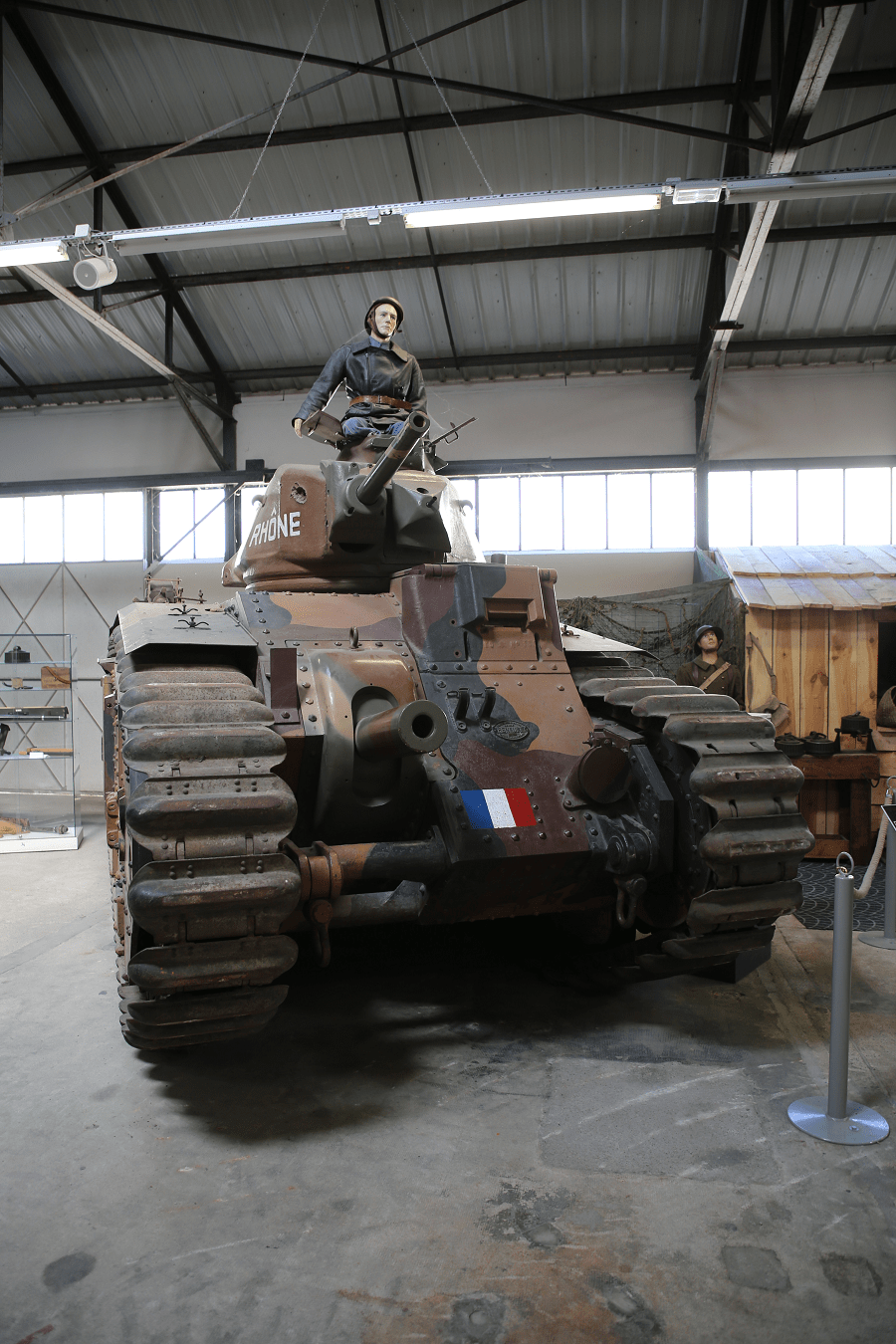The Char B1 was a French heavy tank manufactured before World War II.
The Char B1 was a specialised break-through vehicle, originally conceived as a self-propelled gun with a 75 mm howitzer in the hull; later a 47 mm gun in a turret was added, to allow it to function also as a Char de Bataille, a “battle tank” fighting enemy armour, equipping the armoured divisions of the Infantry Arm. Starting in the early twenties, its development and production were repeatedly delayed, resulting in a vehicle that was both technologically complex and expensive, and already obsolescent when real mass-production of a derived version, the Char B1 “bis”, started in the late 1930s. A further up-armoured version, the Char B1 “ter”, was only built in two prototypes.
Among the most powerfully armed and armoured tanks of its day, the type was very effective in direct confrontations with German armour in 1940 during the Battle of France, but low speed and high fuel consumption made it ill-adapted to the war of movement then being fought. After the defeat of France, captured Char B1 (bis) would be used by Germany, with some rebuilt as flamethrowers, Munitionspanzer, or mechanised artillery.
The original Char B1 had frontal and side armour up to 40 mm thick. The vehicle had a fully traversing APX1 turret with a 47 mm L/27.6 SA 34 gun. This had a poor anti-tank capability: the thirty Armour Piercing High Explosive (APHE) rounds among the fifty the tank carried had a maximum penetration of about 25 mm. In addition, it was armed with a 75 mm ABS 1929 SA 35 gun mounted in the right-hand side of the hull front and two 7.5 mm Châtellerault M 1931 machine guns: one in the hull and the other in the turret.
The hull machine gun was to the right of the 75mm gun, in a fixed mount. It was invisible from the outside of the tank, and due to being fixed had very little use. The 75 mm L/17.1 gun, able to fire both a High Explosive and the APHE Obus de rupture Modèle 1910M round, had a limited traverse of only one degree to the left or the right. It was laid onto target by the driver (provided with the gun sight) through the Naeder hydraulic precision transmission.
The traverse had been made possible only in order to align the gun barrel precisely with the sight beforehand. The 75 mm gun had its own loader—the remaining two crew members were the radio operator and the commander, who had to load, aim and fire the 47 mm gun while commanding the vehicle (and in the case of platoon leaders, command other vehicles as well). The fighting compartment had the radio set on the left and an exit hatch in the right side. All vehicles had the ER53 radiotelegraphy set so all communication was in Morse code only.
A hatch in the rear bulkhead gave access to a corridor (under which nineteen 75 mm rounds out of a total of eighty were stowed) in the engine room to the right of the engine, which was officially rated at 250 hp (190 kW), but had an actual output of 272 hp (203 kW). Each tank had its own team of three mechanics; in battle some of these might join the regular crew.
The suspension was very complex with sixteen road wheels per side. There were three large central bogies, sprung by a vertical coil spring. Each central bogie carried two smaller ones. The three vertical springs moved through holes in a horizontal beam, to both extreme ends of which road wheels were attached by means of leaf springs: three at the front and one at the back.
The high track run gave the tank an old fashioned look, reflecting its long development time. It had a maximum speed of 28 km/h and a weight of 28 tonnes. The range was about two hundred kilometres. A total of 34 vehicles were built from December 1935 until July 1937. They had series numbers 102 to 135. Chassis number 101 was kept apart to build the Char B1 ter prototype.












